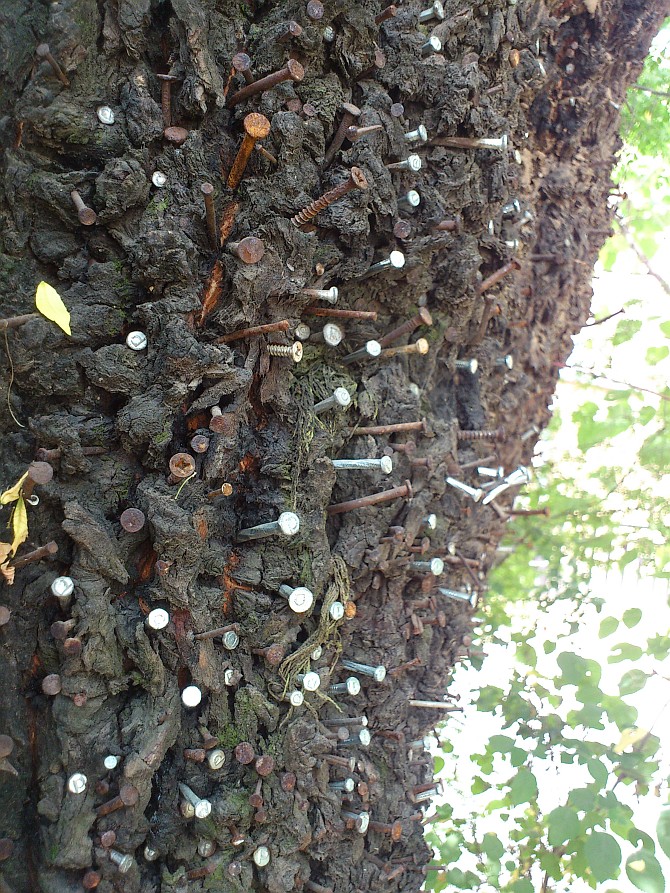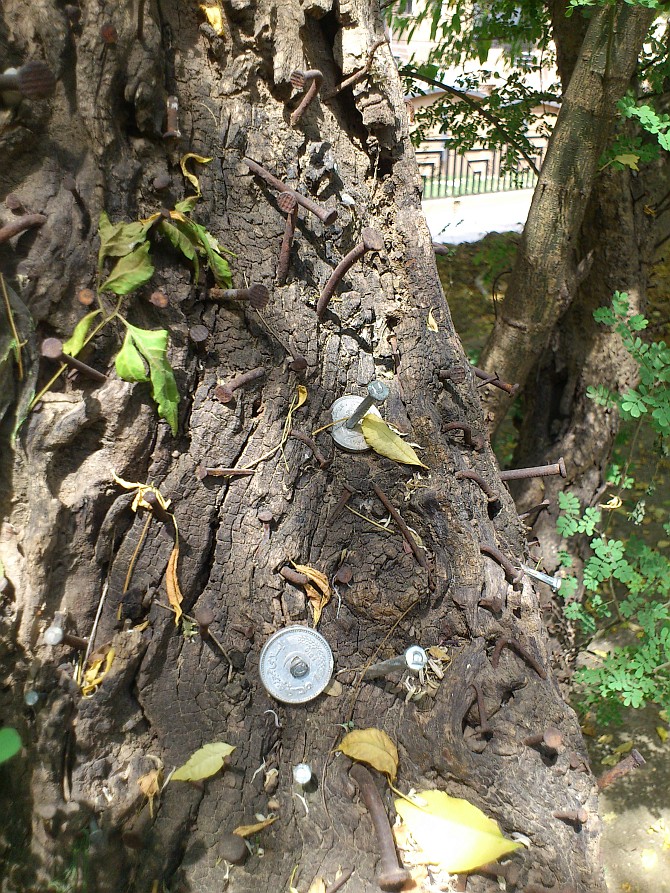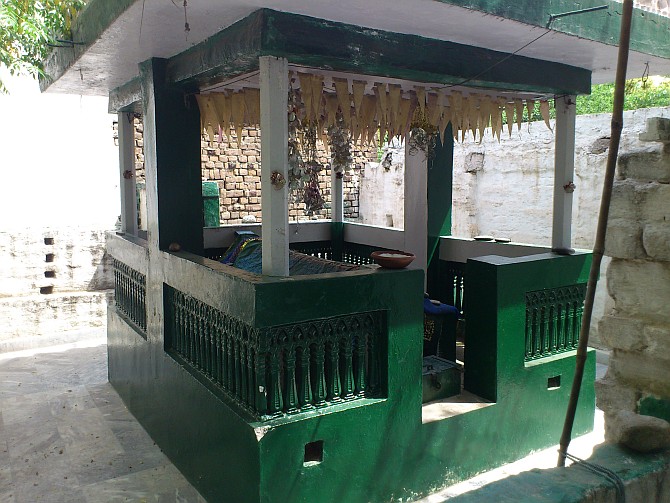Toothache and Cedar Tree
Sector F-11, Islamabad. I turn right from Mehr Ali Shah Road1 onto the sloped street towards Salman Market. Along this street is a small tomb, surrounded by trees and situated a little higher than the surface of the road. The neighbourhood includes grandly built houses and a beautiful park, which makes it easy to miss the tomb as you travel along the street. Inside the tomb is that special cedar tree that I have come to look at: they say that hammering a nail in the trunk of this cedar tree can cure your toothache.
I enter the bounds of the tomb and spot a young man who is watering the plants and washing the floor. There’s a calm vibe inside the tomb, perhaps because of the abundance of greenery. A little further to the side is a shade, under which rows are laid down for saying prayers. A middle-aged man, dressed in a shirt and pants, is sitting under that shade. He eyes me curiously, but I reach towards the young man and greet him. He replies back affably. We shake hands.
I ask him about the cedar tree. “Yes, do you have the nail with you?” he asks me back. I smile and shake my head, “I have heard about the tree; just want to see it.” He points towards a small structure and tells me that that tree is just beside it. I move in that direction and pass the structure to find the cedar tree.
There are two trees present there, and their trunks are kind of unnaturally buried into the soft ground. It seems as if the level of the ground has risen due to excessive soil, but it’s difficult to say if the high level of this ground is natural or artificial. One of these trees is the cedar tree, the other I fail to recognize. Both the trees have hundreds of nails hammered into them by hundreds of people wanting to get rid of their toothaches. The cedar tree is taller and possesses a wider trunk. The number of nails hammered into it is also higher.
I turn around and call the young man, asking for permission to take pictures of the tree. Permission is granted. I take a few shots using my mobile phone’s camera.

I take a step forward and inspect the nails closely. Old and new, rusted and shiny. From a distance, these nails seem to give an uncomfortable texture to the tree’s trunk. Up-close, the overall effect is quite creepy.

I feel sorry for the cedar tree.
At some places, I also see coins of Rs. 1 and 2 hammered along the nail. I am surpised and somewhat amused at the same time.

I come back towards the young man. “Whose tomb is it?”
He points towards the structure, “Shah Faqeer Paracha sahab.” He then tells that a past caretaker (mujawir, مجاور), of the tomb is also buried there, but I forget the caretaker’s name.
I ask him about the nails.
“Yes, Shah Sahab teaches a recitation…” he tells about two azkaar (اذکار) and their count, “… you repeat the recitation and then touch the nail with the affected tooth. If more than one tooth is aching, you touch the nail with all of them one by one, and then hammer it into the tree.”
I do not understand how this can possibly cure a toothache, but nod in response.
The young man offers me a glass of water. I thank him, “How long have you been here?”
“I work somewhere else, but sometimes come here to do my duty by watering the plants, or cleaning the area.” He pauses, “I am not aware if photography is allowed, but I thought that you might as well take some pictures now that you are here.” He looks around, probably in search of the permanent mujawir of the tomb.
I move towards the structure again where the grave of Shah Faqeer Paracha is present, and then take another picture.

Suddenly, a voice in rapidly spoken Punjabi echoes in the air. I fail to understand it, but look towards the direction it came from to find an old and bearded man, standing on the prayer rows and looking at me. He is probably the permanent mujawir of the tomb. I am unable to conclude if he is mad at me or just scolding the young man for something else. The young man, who is busy in watering the plants, doesn’t turn towards the old man but gives a brief reply in Punjabi. I am again unable to understand it, so I look at the old mujawir and the man dressed in shirt and pants, thank the young man, and leave the tomb.
So many questions rise in my head. How old is this cedar tree? Who planted it? What’s the name of the second tree? When did the ritual of hammering nails for curing toothaches start? Why are there coins of Rs. 1 and 2 with some nails? On average, how many people within a month come here to hammer a nail? Did Shah Faqeer Paracha use to live here as well? When did he pass away?
I think that instead of that young man, perhaps these questions can be answered by the old mujawir. And then I think that perhaps I should have talked to the old mujawir too, though that conversation might not have been that pleasant…
I sit in my car and start driving back towards Mehr Ali Shah Road.
-
Its previous name was Hamza Road. [Back]